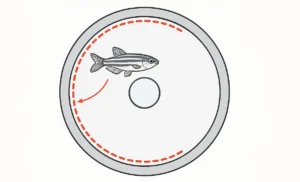

Researchers are working on a self-calibrating endoscope that can capture 3D images of objects smaller than a single cell. The device in question works with optical fiber technology. This new technology makes it possible for the endoscope to take pictures in the body without a light source. Furthermore, the device can measure 200 microns. Such a measure is comparable to three strands of human hair twisted together.
The device is best suited for optogenetics. Which is a research strategy that uses light to simulate cellular activity. Because of this, the tool is equally useful for monitoring tissues and cells during a medical procedure, and for technical inspection also.
Existing endoscopes need a light source and cameras to produce images inside the body. Because of this they are bulky and sometimes difficult to use. So, the new endoscope uses optical fibers to capture the images and this eliminates the need for bulky components.
The new technology has some issues associated with it. Because of the optical fibers the endoscope has to use a complicated calibration process. Especially when the fiber is capturing the images. The researchers working on this project want to solve this issue.
The researchers want to resolve the calibrating issue by adding a glass plate (about 150 microns thick) on top of the fiber bundle. They also experimented with various degrees of light reflection and with the use of fiber bundles.
When you iluminate the central fiber core of the endoscope a beam of light shines and is reflects into the fiber bundle. This process is known as the optical transfer function and it provides vital information that the system uses to calibrate itself on the go.
https://www.eurekalert.org/pub_releases/2019-08/tos-tle081519.php
https://www.osa.org/en-us/about_osa/newsroom/news_releases/2019/fio_tiny_lensless_endoscope/

Monday – Friday
9 AM – 5 PM EST
DISCLAIMER: ConductScience and affiliate products are NOT designed for human consumption, testing, or clinical utilization. They are designed for pre-clinical utilization only. Customers purchasing apparatus for the purposes of scientific research or veterinary care affirm adherence to applicable regulatory bodies for the country in which their research or care is conducted.